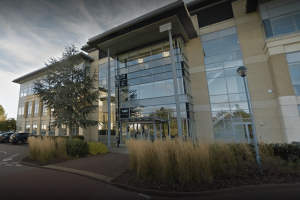Business leaders welcome HS2 route decision

BUSINESS leaders and transport chiefs have welcomed the Government’s announcement of the preferred route for the new London to Birmingham High Speed Rail link.
The CBI welcomed the Government’s commitment to the full ‘Y-shaped’ route, and the fact it had recognised the need to link the new line with Heathrow Airport and HS1, the first phase of the new superfast network.
Richard Lambert, CBI Director-General, said: “The CBI backs the ‘Y-shaped’ route because it brings more benefits for the economy and better connects big cities in the North. It is also good that the line will ultimately link with Heathrow and HS1.”
The CBI has published a new document which sets out business’s views on the high-speed line. It says it would help ease congestion on the main rail network, provide better rail links with international networks, and benefit the economy by shortening journey times and raising productivity.
However, it stresses important questions about the affordability, design and integration of the line remain.
It has therefore set out six conditions that it says must be met before it lends its full support to the scheme.
It wants the Government to:
• Commit to building the full network to Leeds and Manchester, not simply a trunk route to Birmingham
• Link the new line to international gateways and networks, such as Heathrow and HS1
• Agree any private sector funding contributions before construction on the line begins
• Ensure rail freight is not negatively affected by the new network
• Avoid sharp cuts to other capital investment in transport infrastructure in the next spending period from 2015-2020
• Use high-speed rail to support the UK’s climate change objectives.
“A high-speed rail line, linking London and Heathrow with Birmingham and the North has the potential to deliver real economic and environmental benefits,” added Mr Lambert.
“The UK’s railways will reach full capacity in just a few years’ time. So we need to ease pressure on the network and build new lines to take the strain. A high-speed line has the advantage not only of cutting congestion but also slashing journey times, which increases productivity and benefits the economy. By enabling more long-distance journeys to be made by rail, a new high-speed line could also contribute to the UK’s carbon reduction targets.”
He added that the full impact and costs had to be known before work began and that private sector contributions had to be announced upfront.
Estimates are the ‘Y-shaped’ route, from London to Birmingham and with two spurs to Manchester and Leeds, has the ability to generate £25bn in economic benefits compared with a previously designated route, which would have linked London to Birmingham and Manchester, before going on to Leeds.
The new line is expected to run from a rebuilt Euston station in London and terminate at a new city centre station built at Curzon/Fazeley Street in Birmingham’s Eastside regeneration area.
Geoff Inskip, chief executive of Centro, the transport authority for the West Midlands, said: “This is good news for the West Midlands. HSR will transform the region’s economy, creating new jobs and boosting economic activity.
“By 2025 the West Coast line will be at more than full capacity, which underpins a very strong business case for HS2.
“Furthermore, independent research shows that HS2 will generate 22,000 jobs in the West Midlands and boost the region’s economy by £1.5bn a year.”
David Frost, chief executive of the British Chambers of Commerce, said that a growing population and an already overstretched rail network meant the line was a vital investment in economic growth.







